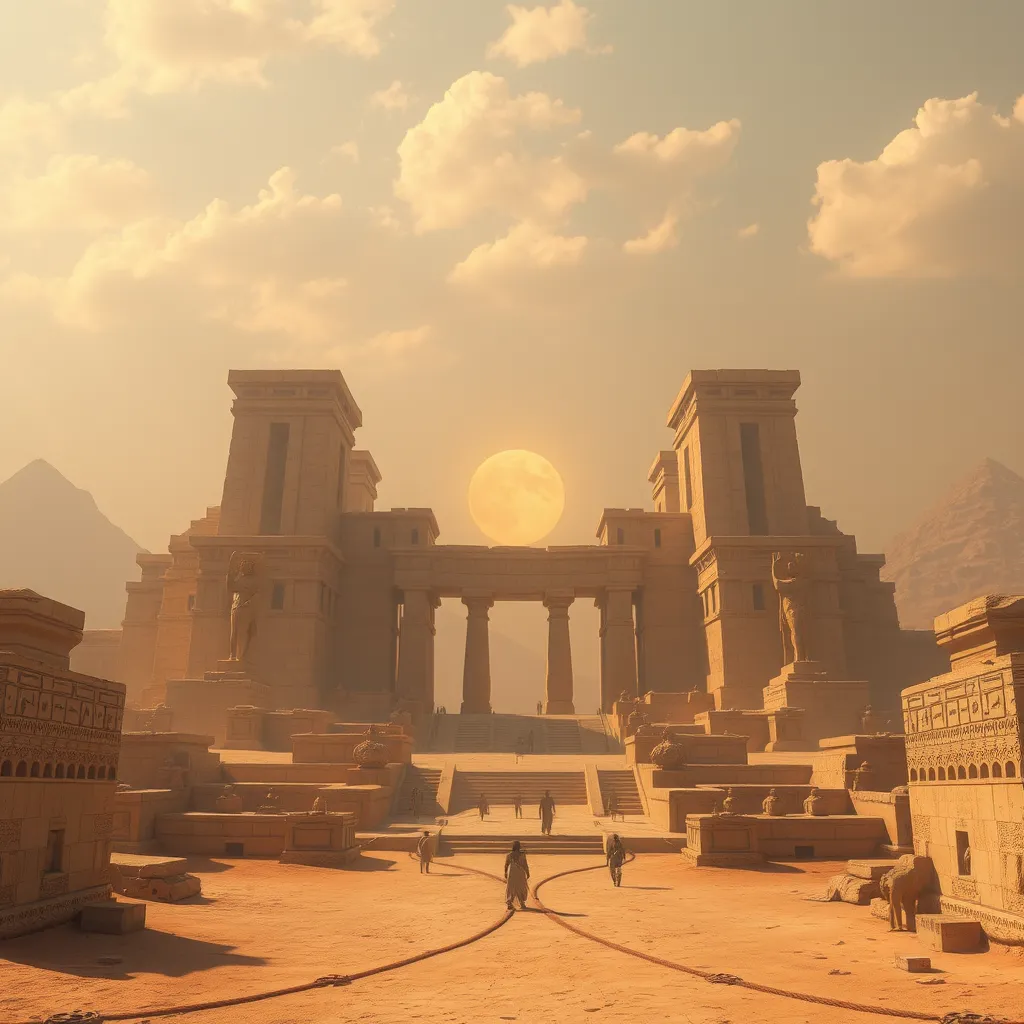The Duat: A Realm of Spiritual Journeys
I. Introduction to the Duat
The Duat, often referred to as the Egyptian underworld, is a central concept in Ancient Egyptian belief systems. It represents the realm where souls journey after death, encompassing both the challenges and rewards they encounter in the afterlife.
In the context of the afterlife, the Duat is crucial as it is seen as a place of transformation and judgment. The beliefs surrounding the Duat shaped the funerary practices of the Egyptians and their understanding of life, death, and what lies beyond.
This article will explore the various aspects of the Duat, focusing on its historical context, structure, the journey of the soul, key figures and deities, the significant rituals associated with it, and its lasting legacy in contemporary spirituality.
II. Historical Context of the Duat
The concept of the Duat has its origins in the early stages of Ancient Egyptian religion, dating back to the Old Kingdom (2686–2181 BCE). It evolved significantly over the centuries, influenced by various religious and philosophical developments.
Initially, the Duat was viewed simply as a dark and mysterious place. However, as Egyptian beliefs became more complex, the Duat transformed into a more structured realm with distinct regions and deities governing different aspects of the afterlife.
Major texts that reference the Duat include:
- The Pyramid Texts
- The Coffin Texts
- The Book of the Dead
These texts provide insight into the rituals, beliefs, and the importance of the Duat in Ancient Egyptian culture.
III. The Structure of the Duat
The Duat is often described as comprising several realms and regions, each with its own unique characteristics and symbolism. These regions include:
- The Field of Reeds: A paradise for the righteous, representing eternal life.
- The Waters of Chaos: A treacherous area representing danger and uncertainty.
- The Hall of Judgment: The site where souls face the Weighing of the Heart ceremony.
The symbolism associated with these various realms is profound. For example, the Field of Reeds symbolizes fertility and abundance, while the Waters of Chaos represent the unknown and the potential for destruction.
The journey through the Duat is significant as it reflects the soul’s transformation and the trials it must undergo to achieve rebirth and eternal life.
IV. The Journey of the Soul
The process of death and entry into the Duat is a critical aspect of Egyptian spirituality. Upon death, the soul embarks on a journey that requires navigating various obstacles and trials. This journey is not merely a passage but a transformative experience.
Challenges faced by the soul along the journey often included:
- Encounters with monsters and spirits that sought to hinder progress.
- Tests of knowledge and moral integrity.
- Navigation through dark and treacherous landscapes.
Throughout this journey, gods and divine beings play crucial roles in guiding and protecting the soul. Deities such as Anubis, the god of funerary rites, and Osiris, the god of the afterlife, are integral to ensuring a safe passage through the Duat.
V. Key Figures and Deities in the Duat
The Duat is populated by numerous gods and divine beings, each with specific roles and attributes. Some of the most significant figures include:
A. Osiris
Osiris is the god of the afterlife and resurrection. He embodies the principles of renewal and transformation, serving as the ultimate judge of the dead.
B. Anubis
Anubis is known as the protector of graves and the guide for souls. He is depicted with a jackal’s head and is responsible for overseeing the mummification process.
C. Other Deities
Additional deities such as Thoth, the god of wisdom, and Ma’at, the goddess of truth and justice, also play important roles within the Duat, ensuring that the cosmic order is maintained.
VI. The Weighing of the Heart Ceremony
One of the most significant rituals associated with the Duat is the Weighing of the Heart ceremony. This ceremony symbolizes the judgment of the soul after death and its worthiness for eternal life.
During this ceremony:
- The heart of the deceased is weighed against the feather of Ma’at.
- If the heart is lighter than the feather, the soul is deemed pure and granted access to the Field of Reeds.
- If it is heavier, the soul faces annihilation at the hands of Ammit, the devourer of souls.
The role of Ma’at in this ceremony underscores the importance of truth, justice, and moral integrity in Ancient Egyptian belief systems.
VII. Symbolism and Art in Depictions of the Duat
The Duat has been richly depicted in Ancient Egyptian art, particularly in tomb paintings and temple reliefs. These artistic representations provide valuable insights into the beliefs and rituals associated with the afterlife.
Symbolism in these depictions often includes:
- Hieroglyphs that convey messages about the journey through the Duat.
- Imagery of gods and goddesses that guide and protect the deceased.
- Scenes depicting the Weighing of the Heart ceremony.
These artistic expressions have significantly impacted our understanding of the Duat, revealing the complexities of Ancient Egyptian spirituality and their views on the afterlife.
VIII. Conclusion: The Legacy of the Duat in Contemporary Spirituality
The Duat continues to influence modern spiritual beliefs and practices, serving as a reminder of the enduring human fascination with life after death and the journey of the soul.
In contemporary spirituality, the lessons of the Duat resonate in various ways:
- The importance of living a life aligned with truth and justice.
- Reflections on the nature of transformation and rebirth.
- Exploration of the journey as a metaphor for personal growth and understanding.
In conclusion, the Duat is not merely an ancient concept but a profound symbol of the spiritual journey that continues to inspire and resonate with people today. Its legacy in culture and religion reminds us of the universal quest for meaning, understanding, and continuity beyond death.





